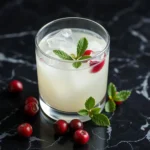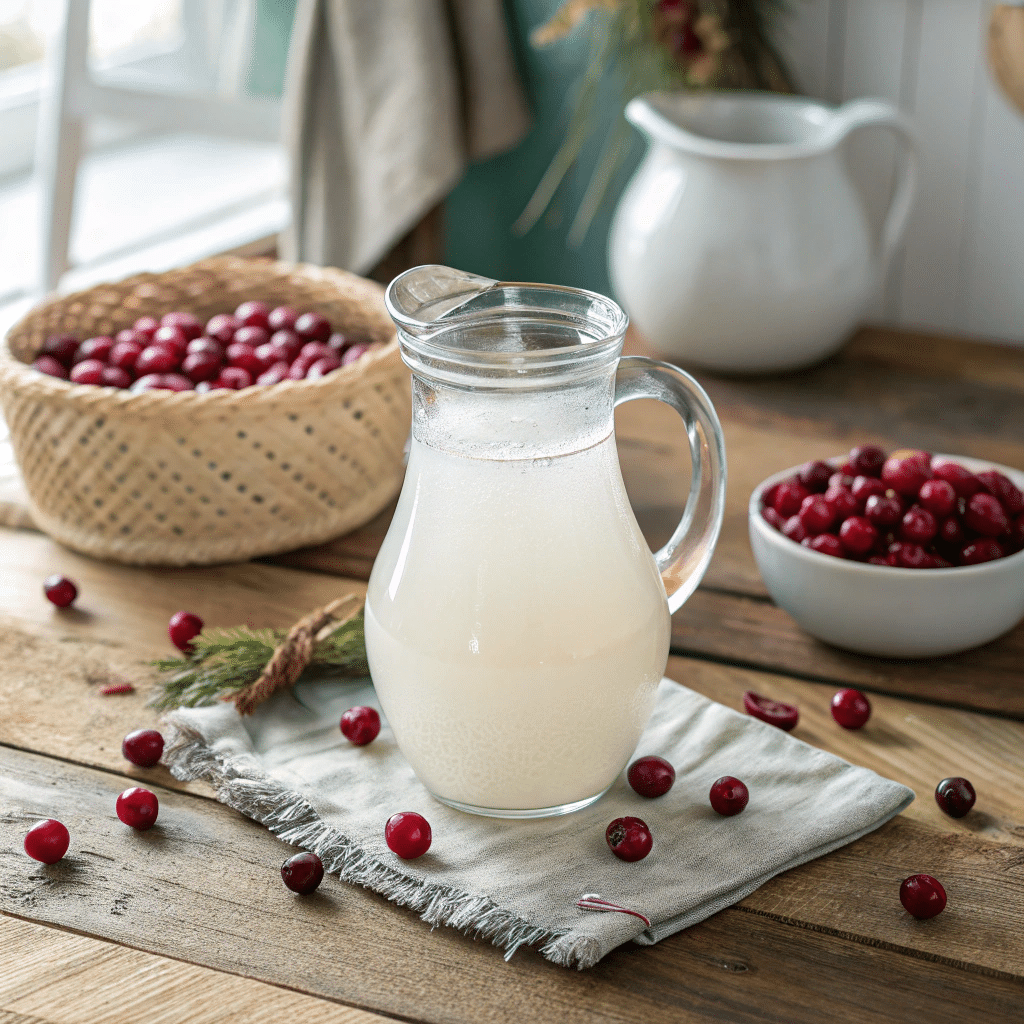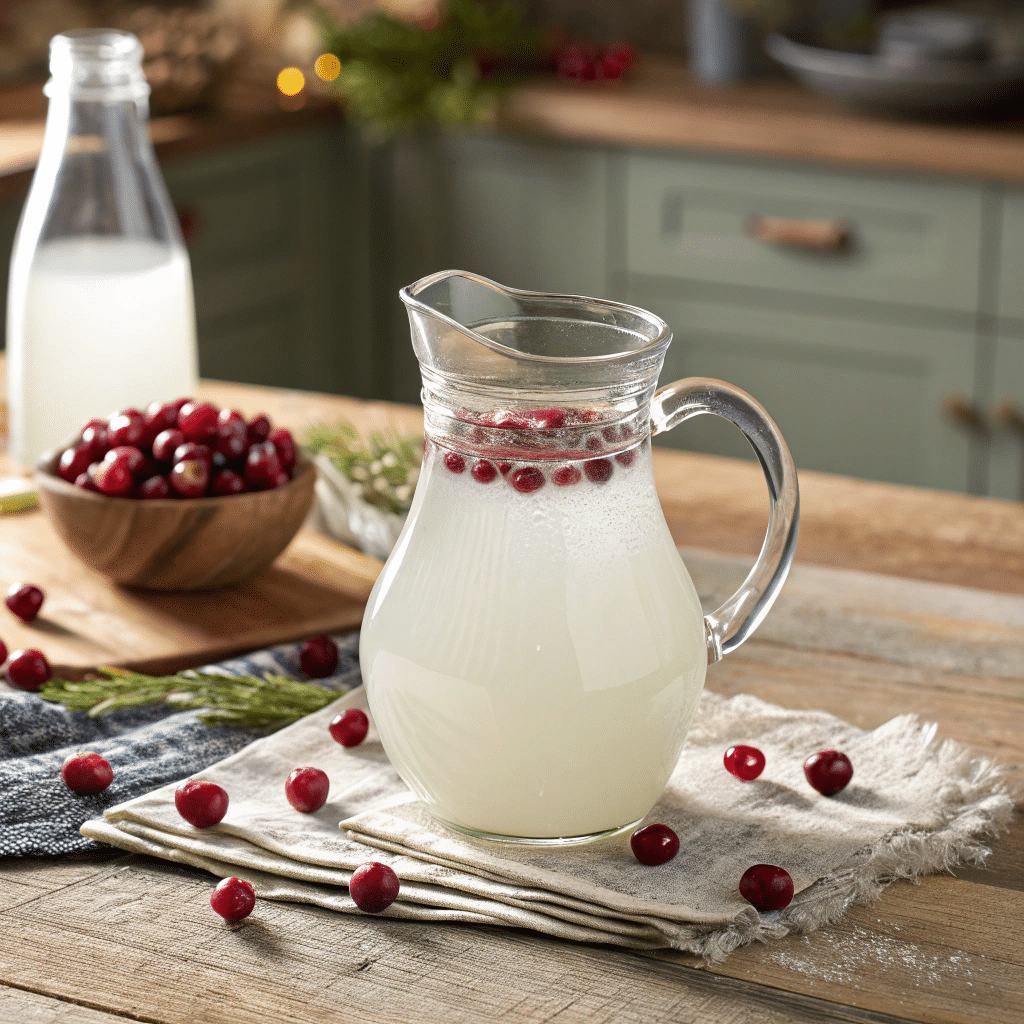Table of Contents
Table of Contents
White Cranberry Juice Recipe: 4 Simple Steps to Make This Refreshing Drink
Picture yourself in my kitchen last autumn, when I discovered the most beautiful cranberries I’d ever seen. These weren’t the deep red berries I grew up with in Madison, Georgia. Instead, they were pristine white gems that my neighbor brought from her family’s bog up north. That first sip of white cranberry juice I made changed everything I thought I knew about this tart fruit. The gentle sweetness caught me off guard, and suddenly I understood why this clear elixir has become such a beloved alternative to traditional cranberry juice.
White cranberry juice brings all the health benefits you’d expect from cranberries, but with a milder flavor that even my pickiest family members adore. Unlike its ruby-red cousin, white cranberry juice won’t stain your favorite tablecloth or leave purple mustaches on the kids. Most importantly, this recipe captures the essence of cranberries at their most delicate stage, creating a drink that’s both refreshing and surprisingly versatile.
Here’s Alice’s story about white cranberry juice: Growing up in Madison, Georgia, my fondest memories are of family and friends gathered in our kitchen, sharing laughter and good food. I’ve always believed that every dish tells a story, sometimes with a side of burnt biscuits! After years of exploring Southern kitchens and picking up flavors from roadside diners, I love putting a creative twist on classic recipes. Here, you’ll find approachable, flavorful dishes and honest stories. No matter your skill level, I’m cheering you on. So pour some sweet tea, pull up a chair, and let’s make something wonderful together.
Print
White Cranberry Juice: 7 Surprising Benefits
- Total Time: PT0H30M
- Yield: 4 servings
Description
A refreshing homemade white cranberry juice made from early-harvested cranberries, offering a milder flavor than traditional cranberry juice with the same health benefits.
Ingredients
4 cups fresh or frozen white cranberries
4 cups water
1/2 to 3/4 cup sugar or honey (adjust to taste)
2 tablespoons fresh lemon juice
Optional: strip of orange peel for extra flavor

Instructions
Step 1: Wash white cranberries thoroughly and remove any soft or damaged berries
Step 2: Combine cranberries and water in medium saucepan, bring to boil over medium-high heat

Step 3: Reduce heat to medium, simmer 10-15 minutes until cranberries burst and release juices
Step 4: Strain mixture through fine-mesh strainer lined with cheesecloth, pressing berries gently

Step 5: Return strained juice to saucepan, add sweetener and lemon juice
Step 6: Heat gently until sweetener dissolves completely, then remove from heat
Step 7: Cool completely before transferring to glass container and refrigerating
Notes
Store in refrigerator up to 1 week in sealed glass container
Shake well before serving as natural separation may occur
Adjust sweetness to your preference – white cranberries are naturally less tart
Can freeze in ice cube trays for up to 6 months
Substitute with white grape juice if white cranberries unavailable
- Prep Time: PT0H15M
- Cook Time: PT0H15M
- Category: Beverages
- Method: Stovetop
- Cuisine: American
What Makes White Cranberry Juice Special
The Science Behind the Color
Most people don’t realize that white cranberry juice comes from the exact same fruit as regular cranberry juice. The difference lies entirely in timing and processing. White cranberries are harvested during a brief two-week window when the berries have naturally turned from green to white but haven’t yet developed their characteristic red pigmentation. The juice inside all cranberries is actually clear, it’s the red skin that gives traditional cranberry juice its deep color.
This early harvest captures the cranberries at a unique stage where they possess most of their beneficial nutrients but with significantly less tartness. The natural sugars have developed enough to provide sweetness, while the acids that make regular cranberry juice so mouth-puckering remain at manageable levels. Additionally, you’ll find that fresh lime juice offers similar citrus benefits with its own unique flavor profile.
Nutritional Profile and Health Benefits
White cranberry juice retains many of the same health benefits as traditional cranberry juice, including vitamin C, antioxidants, and natural compounds that support urinary tract health. However, it contains slightly fewer antioxidants called anthocyanidins, which are responsible for the red pigmentation in fully ripe cranberries. The trade-off is a more approachable flavor that makes it easier to incorporate into daily routines.
Research suggests that cranberry products may help prevent urinary tract infections in some people, though the evidence is mixed and more concentrated supplements tend to be more effective than juice. White cranberry juice offers a gentler introduction to these potential benefits, especially for those who find regular cranberry juice too harsh. For those interested in other healthful beverages, 3 energizing juices provide excellent alternatives for boosting your daily nutrition.

How to Make Perfect White Cranberry Juice
Selecting and Preparing Your Cranberries
Finding fresh white cranberries can be challenging since they’re only available during a short harvest window. However, frozen white cranberries work beautifully for juice-making and are often easier to source. Start with 4 cups of fresh or frozen white cranberries, ensuring you remove any soft or damaged berries that could create off-flavors in your finished juice.
Begin by thoroughly washing your cranberries in cold water, gently swirling them to remove any debris. If you’re using frozen berries, there’s no need to thaw them first, they’ll break down perfectly during the cooking process. The key is maintaining the integrity of these delicate berries while extracting maximum flavor.
| Ingredient | Amount | Purpose |
|---|---|---|
| White cranberries | 4 cups | Main flavor base |
| Water | 4 cups | Cooking liquid |
| Sugar or honey | 1/2 to 3/4 cup | Sweetening to taste |
| Lemon juice | 2 tablespoons | Brightness and preservation |
The Cooking and Straining Process
Combine your prepared cranberries and water in a medium-sized saucepan, bringing the mixture to a boil over medium-high heat. Once boiling, reduce the heat to medium and simmer for 10-15 minutes, or until the cranberries burst and release their juices. You’ll hear gentle popping sounds as the berries break open, this is exactly what you want to achieve maximum flavor extraction.
After the cranberries have softened and burst, strain the mixture through a fine-mesh strainer lined with cheesecloth, pressing the cooked berries gently with a spoon to extract every drop of precious juice. Return the strained juice to your saucepan and stir in your preferred sweetener along with fresh lemon juice. Heat gently until the sweetener completely dissolves, then remove from heat and allow to cool before refrigerating. Similar to how we prepare chia water, patience during the straining process ensures the clearest, most refined final product.
Creative Ways to Use White Cranberry Juice
Elegant Cocktails and Mocktails
White cranberry juice’s clear appearance and mild flavor make it perfect for sophisticated beverages that won’t overpower other ingredients. Try mixing it with sparkling water and a splash of lime for a refreshing daily drink, or create elegant cocktails that showcase the subtle cranberry notes without the intense tartness of traditional cranberry juice. The crystal-clear color allows other ingredients to shine while providing a delicate fruity backdrop.
For special occasions, white cranberry juice works beautifully in punch recipes where you want cranberry flavor without the dramatic red color that might clash with your table setting. Consider combining it with white grape juice, ginger ale, and fresh mint for a crowd-pleasing party punch that’s both refreshing and visually appealing. Just like the versatility found in Hugo spritz recipes, white cranberry juice adapts beautifully to various flavor combinations.
Culinary Applications Beyond Beverages
Don’t limit white cranberry juice to drinking alone. This versatile ingredient works wonderfully in marinades for poultry, adding subtle sweetness and acidity that helps tenderize meat while imparting delicate flavor. You can also reduce it into a light syrup for drizzling over pancakes, ice cream, or fresh fruit salads.
White cranberry juice makes an excellent base for homemade popsicles, especially when combined with fresh herbs like mint or basil. The mild flavor pairs beautifully with vanilla yogurt or coconut milk for creamy frozen treats that appeal to both children and adults. Much like the creative applications we explore with Shirley Temple variations, white cranberry juice opens up endless possibilities for culinary creativity.

Storage Tips and Substitutions
Proper Storage for Maximum Freshness
Homemade white cranberry juice stays fresh in the refrigerator for up to one week when stored in a sealed glass container. Always shake well before serving, as natural separation may occur during storage. For longer preservation, you can freeze white cranberry juice in ice cube trays, then transfer the frozen cubes to freezer bags for up to six months.
The key to maintaining optimal flavor lies in minimizing exposure to air and light. Glass containers work better than plastic for preventing flavor absorption, and storing your juice in the coldest part of your refrigerator helps preserve both taste and nutritional content. If you notice any off-odors or cloudiness beyond normal separation, it’s time to make a fresh batch.
Perfect Substitutes When White Cranberries Aren’t Available
When you can’t find white cranberries, several alternatives can create similar results. White grape juice mixed with a small amount of regular cranberry juice and lemon juice provides comparable sweetness and acidity. Pomegranate juice diluted with white grape juice offers antioxidant benefits with a milder flavor profile than straight pomegranate.
For the closest match to homemade white cranberry juice, try combining equal parts white grape juice and unsweetened apple juice with a tablespoon of lemon juice per cup. This mixture provides the gentle sweetness and light tartness that makes white cranberry juice so appealing. Similarly, when making natural Mounjaro drinks, ingredient substitutions can maintain the intended health benefits while adapting to available ingredients.
Frequently Asked Questions
Q: What makes white cranberry juice?
A: White cranberry juice is made from cranberries that are harvested early in their growing cycle, before they fully ripen and develop their characteristic red color. These white cranberries are pressed to extract their clear juice, which is then typically sweetened and sometimes blended with other fruit juices like white grape for enhanced flavor.
Q: What’s the difference between cranberry juice and white cranberry juice?
A: The main difference lies in harvesting time and flavor profile. Traditional cranberry juice comes from fully ripe, red cranberries with intense tartness and deep color, while white cranberry juice uses early-harvested berries that are milder, sweeter, and produce a clear liquid. White cranberry juice contains fewer anthocyanidins (the compounds that create the red color) but retains most other beneficial nutrients.
Q: What can I substitute for white cranberry juice?
A: The best substitute is white grape juice, which provides similar light sweetness and clear color. Other good alternatives include diluted pomegranate juice, tart cherry juice mixed with apple juice, or a combination of white grape juice with a small amount of regular cranberry juice and lemon juice for tartness.
Q: Does white cranberry juice help with yeast infection?
A: While cranberry products are often touted for urinary tract health, there’s limited scientific evidence supporting cranberry juice specifically for yeast infections. Most research focuses on UTI prevention, and even those results are mixed. For yeast infections, it’s best to consult with a healthcare provider for proven treatment options rather than relying on home remedies.
conclusion
White cranberry juice offers a delightful twist on the classic cranberry experience, bringing all the potential health benefits in a gentler, more approachable package. Whether you’re serving it to guests who find regular cranberry juice too tart, creating elegant cocktails for special occasions, or simply enjoying a refreshing daily beverage that won’t stain everything in sight, this clear elixir deserves a place in your refrigerator. The subtle sweetness and versatility make it perfect for both drinking straight and incorporating into various culinary creations. Most importantly, making your own white cranberry juice ensures you control the sweetness level and avoid unnecessary additives found in many commercial versions. Give this recipe a try, and discover why white cranberry juice has become such a beloved alternative for health-conscious families everywhere.
Article updated 28 June 2025.
For more recipes, visit my Facebook page.

2 thoughts on “White Cranberry Juice: 7 Surprising Benefits”